15 years ago, in 2008, a group of dedicated video game enthusiasts went on a mission to safeguard the treasures of the past, while also breaking the shackles of the rising always-online trend in gaming. Good Old Games, now known simply as GOG, has emerged as a safe haven for all fans of classic titles, committed to preserving and reviving classic PC games for modern audiences and giving the players complete freedom of how they want to store and play their games.
All these years later, in a digital era where games can easily vanish into obscurity, we still continue this quest and try our best to make games last forever by giving them their forever home, and preventing them from being forgotten.
During our 15th Anniversary we want to talk about our love for video games and what we do exactly to save PC game classics.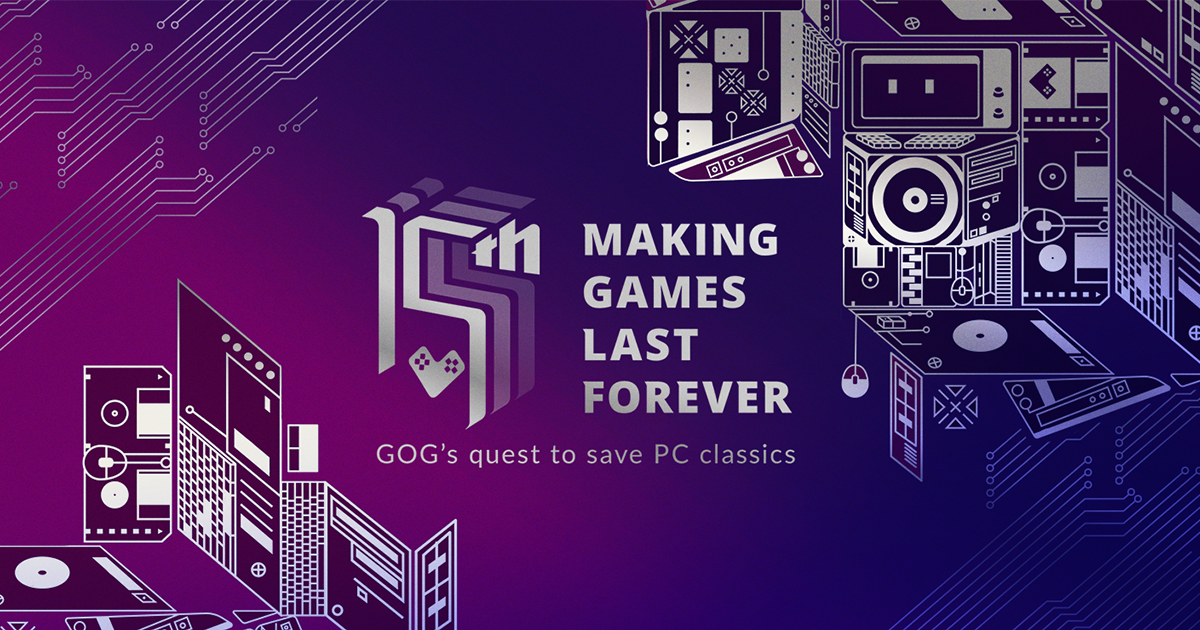
A journey back to the roots
Our roots trace back to, of course, CD PROJEKT, a video game developer, publisher and distributor based in Warsaw, Poland, founded in May 1994 by Marcin Iwiński and Michał Kiciński. However, the company's journey into the realm of classic game preservation is a tale filled with twists and turns. In the 90s, CD PROJEKT found success as a retail game distributor in Poland, a market riddled with rampant piracy. It was during this time that they discovered a unique approach to combat piracy — offering classic games at budget-friendly prices.
This revelation marked the genesis of our mission. The vision was clear: providing gamers with a hassle-free, accessible way to enjoy their favorite classic titles. The concept proved effective, and thus, "Good Old Games" was born. At our inception, the primary focus (which we still continue) was on reviving and distributing classic PC games.
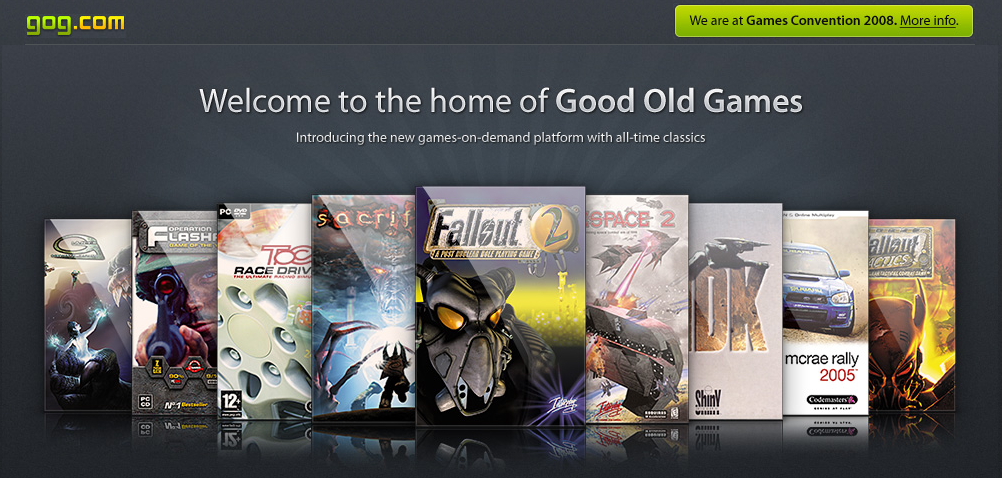
The quest for forgotten gems
The path to preserving classic games is not an easy one. One of the significant challenges we faced was acquiring the rights to release these beloved titles on our platform – after all, negotiating with rights holders can be a time-consuming and complex endeavor. Often, identifying who owns the IP can be a Herculean task in itself!
Most rights of classic titles are lost between companies and those companies’ twists and turns. Moreover, some agreements are written in a way where after a certain amount of time the rights revert to the developer. But the question of what exact rights (code, IP, music, etc.) remains a mystery. There are games that require multi-way agreements, and some rights go to one party and are blocked by another. Sometimes, the challenge is also about making the original rights holder aware of just how much value to the industry and joy to the gamers the revival of the game would bring. Particularly when the rightful owner is not familiar with the IP's historical significance and video games as a whole.
The process of discovering who owns the rights to a product usually begins with searching international IP databases. If the current owner is still maintaining the IP, it should be found there. However, this is not the case for most classic games, which requires further investigation. – explains Marcin Paczyński, our Senior Business Development Manager.
We start at the beginning – the original developer and publisher. If they are still active then we contact them and simply ask them. If they are not, the process becomes more complex as various scenarios can arise. The company could have gone bankrupt and the rights were sold to different parties, or only a portion of the rights were sold. It's also possible that the company was sold and the new owner subsequently went bankrupt, and so on. While going through all that we try to get in contact with people who might have been involved at any point of this IPs history with hopes that they might have some additional insight. That is often the case.Generally, this process can be quite lengthy and may encounter obstacles when we exhaust our leads in the investigation or when we know where to look but cannot access the information. For instance, we may need to retrieve old agreements from a corporation's “basement”, but the company is unwilling to prioritize something that is not bringing them any significant revenue.Making a classic run on a modern PC
When the holders of the IP are successfully identified and the game has been signed on our platform, sometimes yet another challenge emerges: preparing that game to run on modern systems.
Having to find the correct codec, fiddle with many settings, including scaling, controller setups and CPU cycles, sometimes having to dynamically set them because different parts of a game behave differently – all of those and more are things that our team has to go through.
Here’s how Anna Grodowska, our current Senior Technical Producer, described the process when we asked her last time:
Well, obviously the first move for us is to get “inside” the game and remove its Digital Rights Management feature (DRM in short). The next step would be a complex evaluation of how to make a specific title run on modern computers. It’s all about creating a list of potential problems we might have to delete/fix in order for the game to work as well as it would on older, obsolete machines.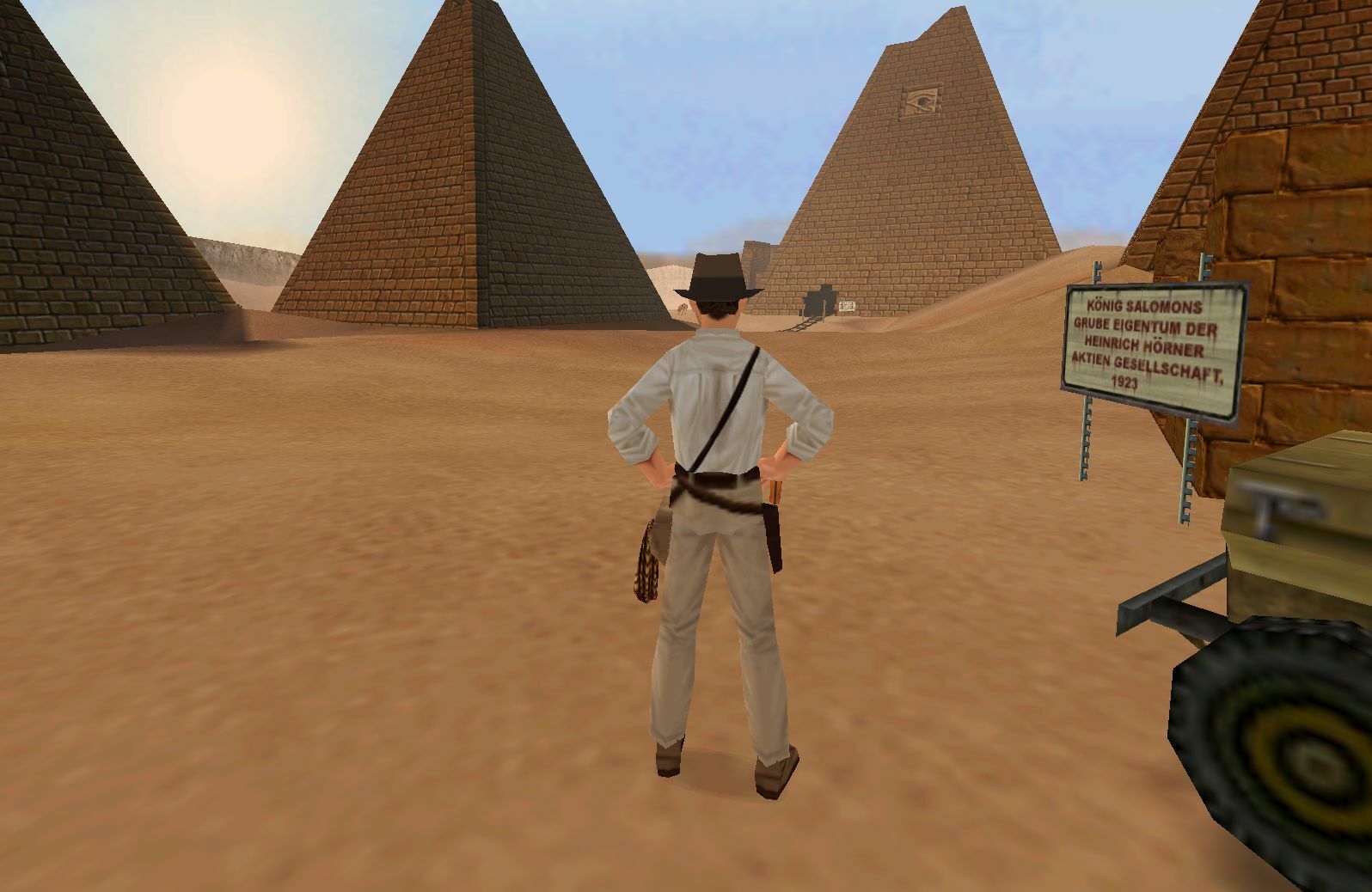 Sometimes it’s during this second step that we have to fix some problems and dig deeper to find new ones. For example, if the game does not run at all, we must first do our best to launch it so that we can examine how other features like 3D renderer, audio system, or LAN multiplayer may work. Part of this process is examining the technical possibilities of potentially expanding the functionalities of the title without, of course, making changes to its gameplay. For example, sometimes we make it so that the game can support natively wide-screen displays, high resolutions (1080, 4K, 8K), or new controller types.After the evaluation part, the time comes for fixing the problems themselves. Since in 99% of cases we don’t have the game’s source code itself, we usually resort to the good old technique of reverse engineering. We also use all sorts of debuggers, monitoring devices, and tens of other tools, including virtual machines and hardware that dates to the times when the particular game was released.
Sometimes it’s during this second step that we have to fix some problems and dig deeper to find new ones. For example, if the game does not run at all, we must first do our best to launch it so that we can examine how other features like 3D renderer, audio system, or LAN multiplayer may work. Part of this process is examining the technical possibilities of potentially expanding the functionalities of the title without, of course, making changes to its gameplay. For example, sometimes we make it so that the game can support natively wide-screen displays, high resolutions (1080, 4K, 8K), or new controller types.After the evaluation part, the time comes for fixing the problems themselves. Since in 99% of cases we don’t have the game’s source code itself, we usually resort to the good old technique of reverse engineering. We also use all sorts of debuggers, monitoring devices, and tens of other tools, including virtual machines and hardware that dates to the times when the particular game was released.A few examples
Some titles are extremely challenging, like
Indiana Jones and the Infernal Machine or
Star Wars: Shadows of the Empire. Our team encountered many technical obstacles while working on these titles, and, apart from that, the wrappers used to emulate old-school interfaces we had back when working on mentioned games have proved to be quite obsolete.
To make these titles work, we had to put in a tremendous amount of work, but as Anna says –
The satisfaction that came along with it was very rewarding. The experience we’ve earned on bringing these two games to modern computers and the tools we utilized then also became very beneficial for hundreds of our future projects.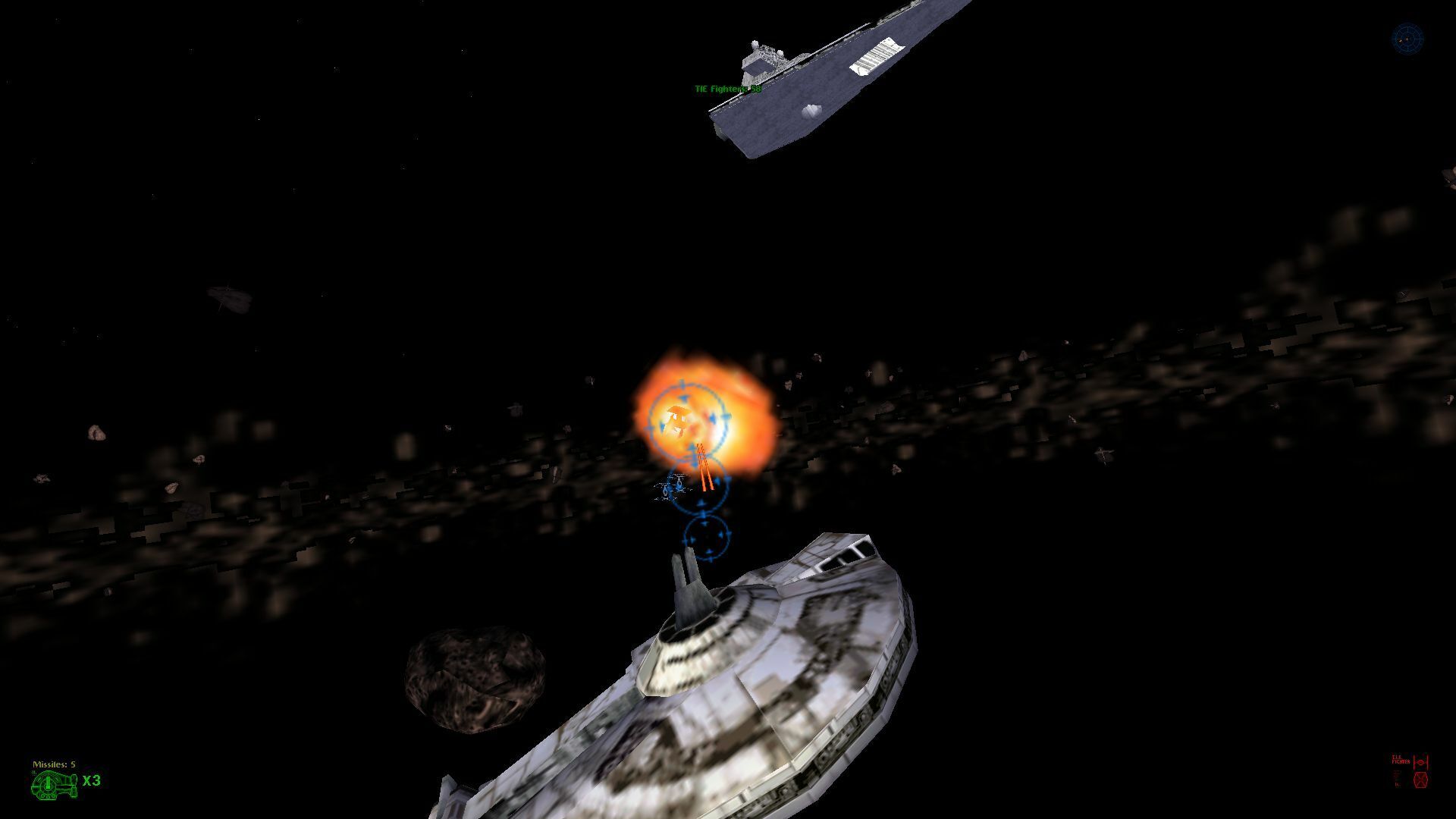
Today, of course, our situation looks very different. We already possess many useful tools for our work that we’re still updating and improving them. Thinking ahead, we already test tools that we’ll need in a few years and will be useful to us for the next decade or so.
Apart from the obsolete interface problem, the games’ concurrency also poses a challenge from time to time. For example, Hidden & Dangerous wasn’t a very problematic game overall, yet it had one irritating issue. Once every several dozen minutes while playing the game you could hear a very loud noise from the speakers accompanied by an irritating white noise that could very well give the gamer a heart attack.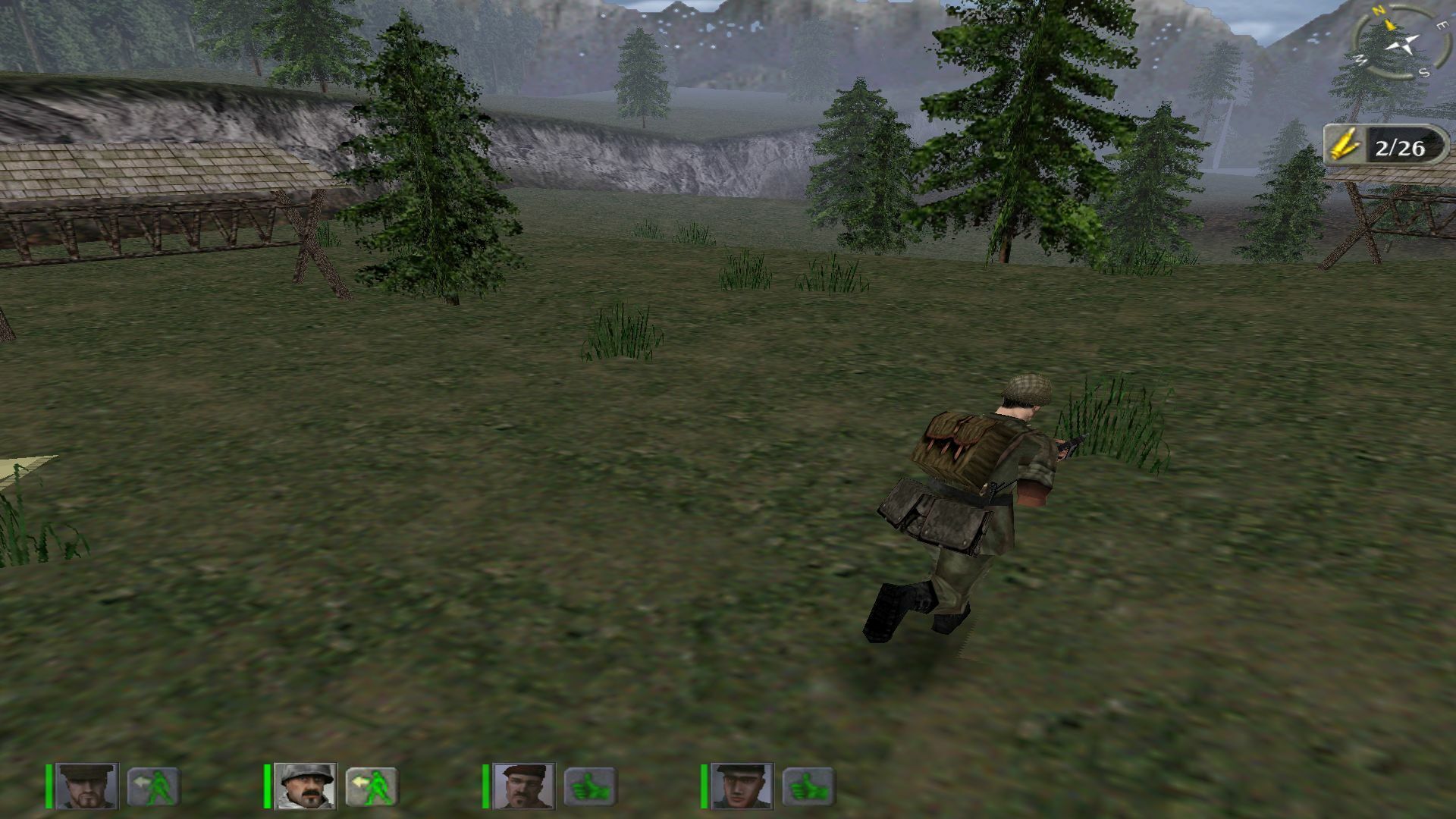 Since this problematic sound could not be played ad-hoc, we had to simply run the game and wait until the problem arises. At the same time, we were watching our tools working in the background and listening to the monotonous barking of a dog (the Velke Gradiste level of the game) sometimes for 10 minutes and sometimes for as much as 3 hours. Needless to say, although we managed to fix the problem eventually, some of us hear the barking of that virtual dog even to this day! The underlying issue has proved to be a small oversight on the part of the game’s creators and the lack of synchronization between threads that fought over the same sound buffer.
Since this problematic sound could not be played ad-hoc, we had to simply run the game and wait until the problem arises. At the same time, we were watching our tools working in the background and listening to the monotonous barking of a dog (the Velke Gradiste level of the game) sometimes for 10 minutes and sometimes for as much as 3 hours. Needless to say, although we managed to fix the problem eventually, some of us hear the barking of that virtual dog even to this day! The underlying issue has proved to be a small oversight on the part of the game’s creators and the lack of synchronization between threads that fought over the same sound buffer. – further explains Anna.
Timing issues and bad coding practices are also not that uncommon. A prominent example was Blood Omen: Legacy of Kain that didn’t synchronize properly or Star Trek: Armada 1+2 utilizing incompatible interfaces in the same engine. We had to rewrite those fragments of code and emulate broken interfaces basically from scratch.As you can see, the process of preserving and reviving classic games for modern players is complex and often requires technical expertise, reverse engineering, and a deep understanding of both old and new hardware and software environments. That however, is a fight always worth taking, as giving you, our community, an ability to play their favorite classic games, and being part of the gaming history’s preservation, makes it all worth it.

What the future holds
From our humble beginnings as a distributor of classic PC games to becoming a global platform where you can find your favorite retro titles, discover indie gems and enjoy modern AAA hits. Our 15 year-long journey has been marked by challenges and triumphs, but our dedication to continue to preserve gaming history, revive inaccessible classics, and provide you with more and more DRM-free games remains stronger than ever.
To everyone who has either been with us through this journey or just joined our merry camp of gaming enthusiasts: thank you, as you’re the reason why we exist. We’ll do our best to continue to deliver you the best possible experience on our platform, so your games have their forever home, and you can play them however you like.Let’s keep the flame of gaming history burning bright. Let’s keep making games last forever, together.

 Sometimes it’s during this second step that we have to fix some problems and dig deeper to find new ones. For example, if the game does not run at all, we must first do our best to launch it so that we can examine how other features like 3D renderer, audio system, or LAN multiplayer may work. Part of this process is examining the technical possibilities of potentially expanding the functionalities of the title without, of course, making changes to its gameplay. For example, sometimes we make it so that the game can support natively wide-screen displays, high resolutions (1080, 4K, 8K), or new controller types.After the evaluation part, the time comes for fixing the problems themselves. Since in 99% of cases we don’t have the game’s source code itself, we usually resort to the good old technique of reverse engineering. We also use all sorts of debuggers, monitoring devices, and tens of other tools, including virtual machines and hardware that dates to the times when the particular game was released.
Sometimes it’s during this second step that we have to fix some problems and dig deeper to find new ones. For example, if the game does not run at all, we must first do our best to launch it so that we can examine how other features like 3D renderer, audio system, or LAN multiplayer may work. Part of this process is examining the technical possibilities of potentially expanding the functionalities of the title without, of course, making changes to its gameplay. For example, sometimes we make it so that the game can support natively wide-screen displays, high resolutions (1080, 4K, 8K), or new controller types.After the evaluation part, the time comes for fixing the problems themselves. Since in 99% of cases we don’t have the game’s source code itself, we usually resort to the good old technique of reverse engineering. We also use all sorts of debuggers, monitoring devices, and tens of other tools, including virtual machines and hardware that dates to the times when the particular game was released. Today, of course, our situation looks very different. We already possess many useful tools for our work that we’re still updating and improving them. Thinking ahead, we already test tools that we’ll need in a few years and will be useful to us for the next decade or so.Apart from the obsolete interface problem, the games’ concurrency also poses a challenge from time to time. For example, Hidden & Dangerous wasn’t a very problematic game overall, yet it had one irritating issue. Once every several dozen minutes while playing the game you could hear a very loud noise from the speakers accompanied by an irritating white noise that could very well give the gamer a heart attack.
Today, of course, our situation looks very different. We already possess many useful tools for our work that we’re still updating and improving them. Thinking ahead, we already test tools that we’ll need in a few years and will be useful to us for the next decade or so.Apart from the obsolete interface problem, the games’ concurrency also poses a challenge from time to time. For example, Hidden & Dangerous wasn’t a very problematic game overall, yet it had one irritating issue. Once every several dozen minutes while playing the game you could hear a very loud noise from the speakers accompanied by an irritating white noise that could very well give the gamer a heart attack. Since this problematic sound could not be played ad-hoc, we had to simply run the game and wait until the problem arises. At the same time, we were watching our tools working in the background and listening to the monotonous barking of a dog (the Velke Gradiste level of the game) sometimes for 10 minutes and sometimes for as much as 3 hours. Needless to say, although we managed to fix the problem eventually, some of us hear the barking of that virtual dog even to this day! The underlying issue has proved to be a small oversight on the part of the game’s creators and the lack of synchronization between threads that fought over the same sound buffer. – further explains Anna.Timing issues and bad coding practices are also not that uncommon. A prominent example was Blood Omen: Legacy of Kain that didn’t synchronize properly or Star Trek: Armada 1+2 utilizing incompatible interfaces in the same engine. We had to rewrite those fragments of code and emulate broken interfaces basically from scratch.As you can see, the process of preserving and reviving classic games for modern players is complex and often requires technical expertise, reverse engineering, and a deep understanding of both old and new hardware and software environments. That however, is a fight always worth taking, as giving you, our community, an ability to play their favorite classic games, and being part of the gaming history’s preservation, makes it all worth it.
Since this problematic sound could not be played ad-hoc, we had to simply run the game and wait until the problem arises. At the same time, we were watching our tools working in the background and listening to the monotonous barking of a dog (the Velke Gradiste level of the game) sometimes for 10 minutes and sometimes for as much as 3 hours. Needless to say, although we managed to fix the problem eventually, some of us hear the barking of that virtual dog even to this day! The underlying issue has proved to be a small oversight on the part of the game’s creators and the lack of synchronization between threads that fought over the same sound buffer. – further explains Anna.Timing issues and bad coding practices are also not that uncommon. A prominent example was Blood Omen: Legacy of Kain that didn’t synchronize properly or Star Trek: Armada 1+2 utilizing incompatible interfaces in the same engine. We had to rewrite those fragments of code and emulate broken interfaces basically from scratch.As you can see, the process of preserving and reviving classic games for modern players is complex and often requires technical expertise, reverse engineering, and a deep understanding of both old and new hardware and software environments. That however, is a fight always worth taking, as giving you, our community, an ability to play their favorite classic games, and being part of the gaming history’s preservation, makes it all worth it.
